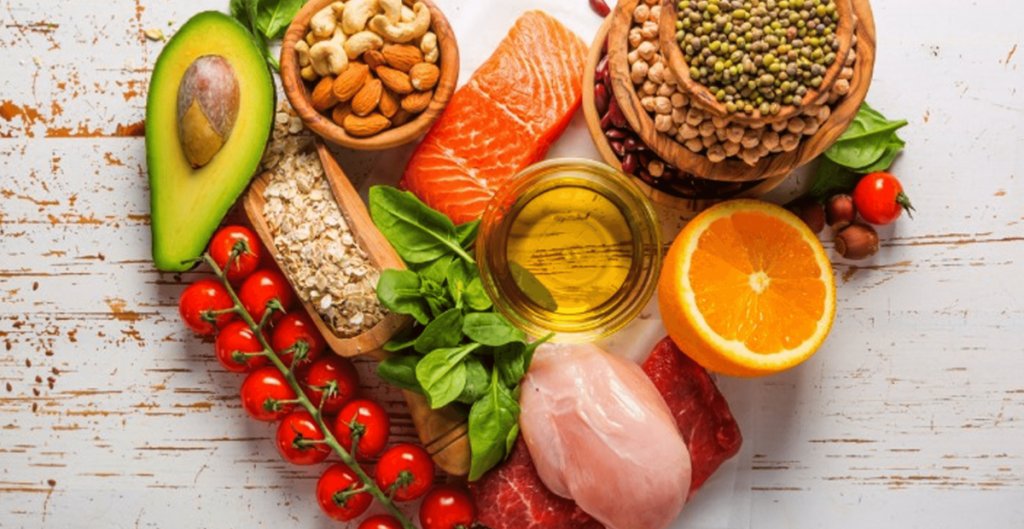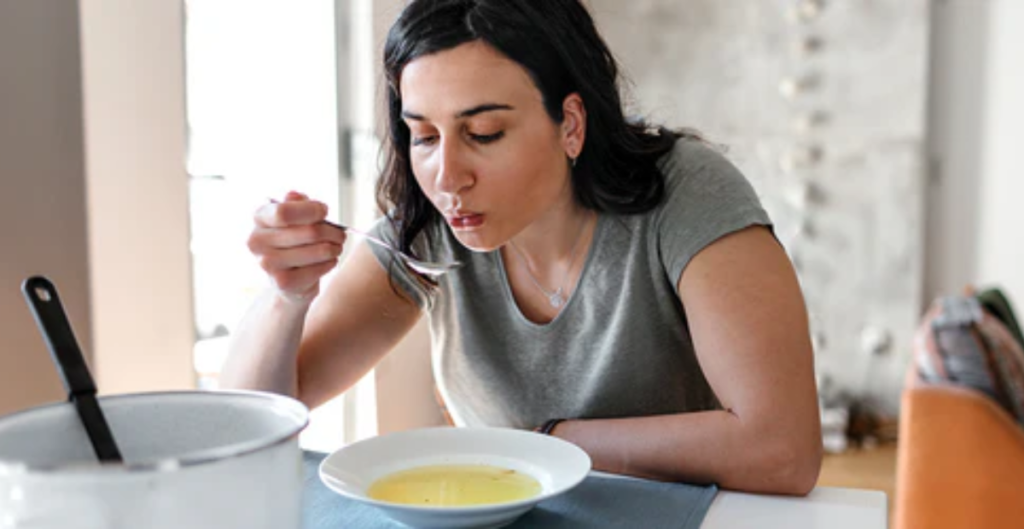Liquid Diet for Diabetics: A Complete Guide for Managing Blood Sugar Levels
Maintaining diabetes management demands a close coordination of food intake, physical activity, and sometimes, drugs. What might be referred to as the ‘liquid diet’ has attracted quite a lot of attention in recent times. The liquid diet for diabetics can be beneficial in terms of controlling the blood sugar level, providing vital nutrients, and not straining the digestive system too much. However, just as with any diet, it has advantages and disadvantages making it crucial to know whether such an approach is suitable to a person or not.
What Is a Liquid Diet for Diabetics?
Diabetics require a liquid diet consisting of well-balanced liquid foods that help in better control of blood sugar and provide complete nourishment as well.
A liquid diet mostly contains fluid meals or meals that easily liquefy in the mouth. This may include clear broth, soups, smoothies, replacement shakes, or vegetable juice. The main aim of this liquid diet for diabetics is to make sure that all essential nutrients and fluids are delivered in a format that is simpler for the body to process and absorb. Because they are sometimes less dense than solid food, liquid diets can prove to be very helpful in specific health conditions, diabetes being one of them.
Because diabetes is characterized as a disease that affects the metabolism of sugar, it is essential for any meal plan for diabetic patients to have a focus on carbohydrate moderation, especially simple carbohydrates that lead to a dramatic rise in blood glucose levels.
Types of Liquid Diets for Diabetics
Check out the various liquid diets for diabetics and see what works best for you.
Liquid meals can come in various forms, and when it comes to diabetics, the interception of the liquid meal will adhere to the requirements of the patient in question and their physician’s recommendation. Here are the most common types:
1. Clear Liquid Diet
A clear liquid diet consists of liquids that are clear and free of any solid particles. These may include:
-
- Water
-
- Broths
-
- Unsweetened tea
-
- Clear juices (but not typically recommended for diabetics due to sugar content)
-
- Gelatin (sugar-free)
A clear liquid diet is a diet that is commonly applied for a short period of time as a preparation period for certain medical procedures. Such a diet may not be suitable in terms of providing nutrients for a long period of time and should be applied by insulin users under strict medical supervision.
2. Full Liquid Diet
A full liquid diet allows for all liquids, including those that are more substantial or opaque. This can include:
-
- Milk (low-fat or non-fat)
-
- Smoothies made with vegetables and low-glycemic fruits
-
- Meal replacement shakes designed for diabetics
-
- Soups (pureed with vegetables and proteins)
Diabetics can gain better nutrition on a full liquid diet in comparison to clear liquid diet which is also more effective for long periods. Nevertheless, the carbohydrates consumption has to remain in check since many liquids such as milk and juices contain high levels of sugar.
3. Meal Replacement Shakes and Nutritional Drinks
A good number of diabetics resort to specialized meal replacement shakes and nutritional drinks that claim to help in blood sugar management. These shakes are prepared with a mix of carbs, proteins and fats to avoid slumps in blood sugar. Some examples include:
-
- Glucerna
-
- Boost Glucose Control
-
- Ensure Diabetes Care
Such options can be of great help to the diabetics who require to keep their blood glucose concentrations steady throughout the day especially when they are out of the house or have issues in making solid food.
Benefits of a Liquid Diet for Diabetics
Find out how a liquid diet can be useful for diabetics in terms of blood sugar regulation and digestion.
Liquid diets, when properly planned, can be beneficial in patients suffering from diabetes, especially in maintaining blood glucose levels and general wellbeing. Consider these possible benefits:
1. Easier Blood Sugar Control
Liquid diets are probably less ambiguous and full of complexities in terms of carbohydrate consumption due to the fact that they are mostly packed in sleek looking containers with portions, especially for those who have prepared meal replacement shakes for people suffering from diabetes, and this can lead to easier blood sugar control than solid foods which can sometimes be laden with undetectable carbohydrates.
2. Weight Management
A majority of diabetics consider it very important to manage their weight. This creates a useful advantage of a calorie dense controlled liquid diet, while nutrient rich, can cause weight loss, leading to better insulin response along with retention of good blood sugar control.
3. Reduced Digestive Stress
Oftentimes, a liquid diet is readily acceptable by the digestive system. For diabetics who also have gastro problems such as gastroparesis (more commonly known as the slow emptying of the stomach), a liquid diet like(smoothie diet but if it sugar free) is recommended to lessen the complications and improve nutrient absorption.
4. Convenient and Time-Saving
Perhaps the biggest advantage of going on a liquid diet, particularly one that uses meal replacement shakes, is its ease of use. It can be difficult and time-consuming to prepare healthy meals, but a liquid diet means this is not as much of a barrier, which helps people with diabetes to adhere to their dietary requirements more effectively.
Potential Risks of a Liquid Diet for Diabetics
Understand the possible dangers of a liquid diet for diabetic patients and the ways to prevent blood sugar-related or nutritional complications.
As much as there are many advantages to having a liquid diet for the diabetic patients or diabetic people, the diabetic patients also have to consider some of the risks that they might encounter while implementing a liquid diet plan. It’s crucial to keep in mind these risks and to do everything possible to manage these challenges.
1. Blood Sugar Spikes
Liquid diets, particularly those that incorporate fruit or commercial smoothies, are likely to be rich in sugar content. In such cases, patients with diabetes should always opt for low-Glycemic index options and look out for spikes in their blood sugar levels. One should always check the labeling as well as seek medical advice or consult a nutritionist on liquid diet plans as much as possible.
2. Nutritional Deficiency
If long-term liquid diets are not well-balanced they may result in nutritional shortages in the future. People suffering from diabetes also maintain some protein, fiber and healthy fats in order to stay fit and keep their blood sugar levels calm. Shortages in these necessary nutrients may cause weakness, loss of muscle, and decreased immune responses.
3. Hunger and Satiety Issues
It is common for liquids to provide less satiety when compared to solid food types leading to a sense of hunger and an inclination for increased calorie intake. This is a critical issue for diabetic patients who have to observe an even caloric intake in order to avoid erratic blood sugar levels. Incorporating such fiber-rich foods like vegetable smoothies may also enhance satiety benefits.
How to Safely Follow a Liquid Diet for Diabetics
If you’re considering a liquid diet for managing your diabetes, it’s essential to do so safely. Here are some tips to help ensure that your liquid diet is balanced and supports your health:
1. Choose Low-Glycemic Options
Stick to low-glycemic liquids that won’t cause rapid blood sugar spikes. This includes non-starchy vegetable smoothies, meal replacement shakes specifically designed for diabetics, and broths. Avoid fruit juices and sugary drinks, even if they seem healthy.
2. Incorporate Protein and Healthy Fats
When living with diabetes, such nutrition can help maintain blood sugar level volatility and preserve muscle mass. Mix protein powder into smoothies or opt for drinks with an even proportion of macromolecules. Oils derived from nutritious sources like avocado or flaxseed can also be mixed with soups and smoothies. Some time your physician may consider a carb cycle diet depending up on your conditions.
3. Monitor Blood Sugar Regularly
When following a liquid diet, monitor your blood sugar levels closely to ensure they remain within a healthy range. Liquid foods can sometimes cause unpredictable changes in blood sugar, so frequent checks are essential.
4. Consult a Healthcare Professional
Before starting a liquid diet, consult with a doctor or a registered dietitian who can help you plan meals that meet your individual health needs. A professional can also advise you on how long you can safely follow a liquid diet and whether any additional supplements may be necessary.

Sample Liquid Diet Plan for Diabetics
Here is a simple liquid diet plan that can help diabetics manage their condition while ensuring they receive adequate nutrition:
Breakfast:
-
- Diabetic-friendly meal replacement shake (such as Glucerna)
-
- Unsweetened herbal tea
Mid-Morning Snack:
-
- Low-sodium vegetable broth
-
- 1 cup of unsweetened almond milk
Lunch:
-
- Smoothie with non-starchy vegetables (like spinach or kale), unsweetened almond milk, and a scoop of protein powder
Afternoon Snack:
-
- Sugar-free gelatin or a small serving of Greek yogurt (blended into a liquid consistency)
Dinner:
-
- Pureed vegetable soup (such as a mix of cauliflower, broccoli, and carrots)
-
- Herbal tea or water with lemon
Evening Snack:
-
- A small meal replacement shake or another vegetable smoothie

Conclusion
Sustaining a liquid diet for diabetics may be beneficial in controlling blood glucose levels provided it is balanced and incorporates a variety of nutritious liquids. There are however risks such as inadequate nutrition as well as fluctuations in blood sugars. A healthcare provider should be consulted before commencing such a diet to determine if it will be appropriate for the patient’s health requirements and their diabetes management plan. For your personal research or studies you can get help from list of low fat diet which is explaining a lot about 100 different kinds of foods.



